When two successful businessmen — one from Saudi Arabia and the other from Canada — amass 35% of a junior company’s common shares and dip into their own pockets to loan it $9.5 million, their motives make for good reading.
The story becomes even more compelling when the company’s flagship asset — a past-producing open-pit gold mine in Arizona, called Copperstone, with a tailings facility and a 450-tonne-per-day mill — is fully permitted and can be restarted as an underground mining operation within one year of a production decision.
The mine’s previous owners scooped out half a million ounce gold from an open-pit operation between 1987 and 1993, leaving behind a deposit with a National Instrument 43-101 compliant resource of 311,000 oz. gold in the measured and indicated category (934,000 tonnes grading 10.4 grams gold per tonne) and another 132,000 oz. gold in the inferred category (335,000 tonnes grading 12.2 grams gold).
“It’s highly unique, there’s no question about it,” Claudio Ciavarella, CEO of Kerr Mines (TSX: KER; US-OTC: KERMF), says of his decision, along with the company’s chairman, Fahad Al Tamimi, to restructure the company and lend it nearly $10 million of their own money.
But Ciavarella, an accountant who has built thriving businesses in Canada’s manufacturing, construction and real-estate sectors, and Al Tamimi, a Saudi-based businessman who has founded a flourishing engineering group in the Middle East and holds assets in oil and gas and mining, believe it’s worth the risk.

Kerr Mines’ Copperstone gold project in Arizona. Credit: Kerr Mines.
Both men have been investors in the junior long before it changed its name from Armistice Resources to Kerr Mines in 2014. Al Tamimi got involved in 2012 as an equity participant and shareholder, while Ciavarella has been an investor since 2005, and a director since 2013.
Between 2012 and 2014, however, the company had gone on an acquisition spree, acquiring projects and companies (including Copperstone through a merger with American Bonanza Gold in July 2014).
“During the course of that process it accumulated not only assets but also a lot of liabilities,” Ciavarella says. “Unfortunately, during 2014 to 2015 the equity market wasn’t very strong, so we put all of our assets on care and maintenance.”
By 2016, he says, it looked as though the equity and gold markets were on the brink of a recovery and management thought it was a good time to take the Copperstone project off the shelf. But the executive team had to deal with all the debt accumulated from the company’s earlier buying spree.
“We were upside down financially with regard to liabilities and obligations, so what we did was we ended up restructuring,” he says.
Kerr Mines started the process by selling off its non-core assets, primarily its properties in northern Ontario, to generate cash to deal with some of the $24 million it held in liabilities. When the total debt owed was whittled down to $9.5 million, Ciavarella and Al Tamimi each put up half the money and paid off the remaining creditors. The company has until 2019 to repay the loan, at which point management hopes the company will be cash-flow positive.
Ciavarella was appointed CEO in April 2017 and along with the board put together a strategy of creating value focused on advancing Copperstone. It has launched a drill program and plans to complete an updated resource estimate and a prefeasibility study in the first quarter of 2018, at which point, Ciavarella says, the company will be able to make a production decision.
Initial results from its phase one underground drill program were released earlier this month, with 10 of 12 holes intersecting mineralization. Highlights include 9.8 metres grading 16.2 grams gold per tonne; 6.1 metres grading 8.6 grams gold; 4.6 metres of 5.1 grams gold; 3.1 metres of 7.9 grams gold; 4 metres of 6.2 grams gold; and 2.7 metres of 5.4 grams gold.
The 4,572-metre phase one underground drill program is using two drills to test along strike and up and down dip in the Copperstone Main Zone, which makes up 100% of the deposit’s resource. The program is designed to confirm the continuity of altered detachment fault breccia from existing underground workings at depths from 100 feet (30.5 metres) to 400 feet (122 metres) below the open-pit bottom. The bottom of the open pit sits at 500 feet (152 metres) from surface and there are two adits right into the resource.

Facilities at Kerr Mines’ past-producing Copperstone gold project in Arizona. Credit: Kerr Mines.
In October, Kerr Mines confirmed the existence of the Footwall Zone by modelling historic drilling and incorporating new drilling of its own. The 500- to 800-metre zone is just 152 metres southwest of the Copperstone Main Zone and is easy to access from the bottom of the pit.
“The Footwall Zone isn’t included in our current resource, so it’s a really nice opportunity for us to expand the ounces,” he says. “Our growth plan over the next three to five years is to continue to drill out the footwall and establish it as a potential mining area.”
Another target is the South Zone, which lies 200 metres south of the open pit. “We can drive an adit from the south end of the open pit right into the South target,” Ciavarella says. “Development costs to get into these areas is going to make it very attractive for us, because the infrastructure is all there. The underground workings we have for Copperstone are only a few hundred feet away, and we can shuffle over there and tie those zones together into a mine plan.”
In addition to the Footwall and South Zones, the company has identified the Southwest Zone, which lies 914 metres southwest of the pit.
Back-of-the-envelope calculations suggest there is a lot of room to grow ounces at Copperstone, given that previous owners mined half a million oz. gold from the first 500 feet (152 metres) of the deposit, he says. “You’re talking about 100,000 oz. gold per 100 feet,” he says. “So you look at our resource: We go down 300 feet below the pit bottom and we have 300,000 oz. of existing resource, or roughly another 100,000 oz. per 100 feet, so the orebody continues down dip … our geologists believe this orebody continues to depth until you get to where the detachment fault is.
“Obviously there’s going to be the economics of getting down there — we’ll have to drive ramps down,” he adds. “If the orebody continues at the same rate that has already presented itself, and we’re able to go down another 300 to 500 feet, we have the potential to add 300,000-500,000 oz. gold … that’s one of the belief systems that the geologists who have studied this project for us have.”
The company is also evaluating the copper content of the deposit, which could create a nice stream of revenue, he says, noting that copper assay values are distributed along the entire strike length of the Copperstone Zone. Of historic and new drill hole intervals that contain a gold grade of 3 grams gold per tonne or higher, and that were assayed for copper, the weighted average copper grade is 0.54%.
“We have some pretty decent grades and two different types of copper — sulphide and oxide — and the results will show how we can monetize it,” he says. “The sulphide copper does not float with the gold concentrate we produce and the majority of the copper, which is oxide, may be monetized as it flows to tails. So we’ve now started to look at that. It’s nice because it has the potential to be free cash. It’s free money because we have it with the gold and there’s an opportunity to create a good revenue stream.”
This week the company announced initial metallurgical results that demonstrated sulphide copper recoveries of up to 97% and gold recoveries of up to 91%.
The company’s shares are trading on the Toronto Stock Exchange at 31.5¢ per share within a 52-week trading range of 9¢ to 41¢ per share. The company has 235 million common shares outstanding for a $74-million market capitalization.
In addition to Ciavarella, who owns 11.5% of the company’s shares, and Al Tamimi, who owns 23.5%, Eric Sprott owns 8%.

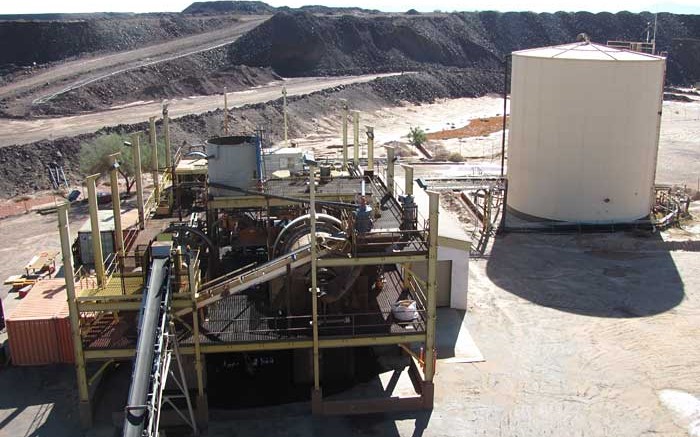
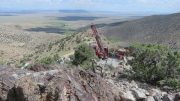
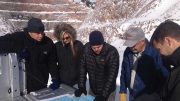
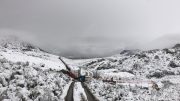
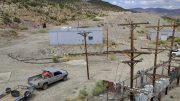
Be the first to comment on "Kerr Mines to make production decision on Copperstone next year"